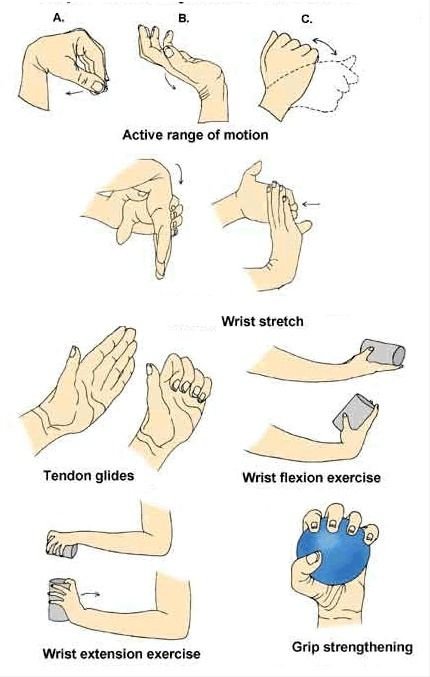Mastering Wrist Health: Effective Strategies for Injury Management and Prevention
Our wrists are remarkable joints that play a crucial role in everyday activities, from typing on a keyboard to lifting weights at the gym. However, they are also vulnerable to injury, whether from overuse, trauma, or poor ergonomics. Wrist injuries can be debilitating, affecting our ability to work, exercise, and perform simple tasks. In this blog post, we'll explore effective strategies for managing and preventing wrist injuries.
Understanding Wrist Injuries:
Wrist injuries can encompass a wide range of conditions, including sprains, strains, fractures, tendonitis, and carpal tunnel syndrome. These injuries can occur suddenly, such as from a fall or impact, or develop gradually over time due to repetitive stress or poor biomechanics. Common symptoms of wrist injuries include pain, swelling, stiffness, weakness, and decreased range of motion.
Managing Wrist Injuries:
Effective management of wrist injuries involves a multifaceted approach that addresses pain relief, promotes healing, and restores function. Here are some key strategies for managing wrist injuries:
Rest and Immobilisation:
If you suspect a wrist injury, it's essential to rest the affected wrist and avoid activities that exacerbate pain or discomfort.
Immobilisation with a splint or brace may be necessary to stabilise the wrist and prevent further injury. Follow your healthcare provider's recommendations regarding duration and wear time.
Ice Therapy:
Applying ice to the injured wrist can help reduce pain, inflammation, and swelling. Use an ice pack or a bag of frozen peas wrapped in a thin cloth and apply it to the affected area for 15-20 minutes at a time, several times a day.
Physiotherapy:
Working with a physiotherapist can be highly beneficial in rehabilitating wrist injuries. Physiotherapy interventions may include manual therapy such as soft tissue releases, dry needling, joint mobilisation and therapeutic exercises.
Gradual Return to Activity:
Once the acute phase of the injury has subsided, gradually reintroduce activities and exercises that involve the wrist. Start with gentle stretching and strengthening exercises and gradually increase intensity and duration as tolerated.
Preventing Wrist Injuries:
While it's not always possible to prevent wrist injuries entirely, there are steps you can take to reduce your risk. Here are some tips for preventing wrist injuries:
Maintain Proper Ergonomics:
Whether at work or home, ensure your workspace is ergonomically optimised to reduce strain on the wrists. Use ergonomic keyboards, mice, and chairs, and position your computer monitor at eye level to promote neutral wrist alignment.
Warm-Up and Stretch:
Before engaging in activities that stress the wrists, such as typing or lifting weights, perform a brief warm-up and stretching routine to prepare the muscles and joints for movement.
Strengthening Exercises:
Incorporate wrist-strengthening exercises into your regular exercise routine to build strength and stability in the muscles surrounding the wrist joint. Focus on exercises that target the wrist flexors, extensors, and stabilisers.
Use Proper Technique:
Whether playing sports, lifting weights, or performing household chores, use proper technique and body mechanics to minimise stress on the wrists. Avoid sudden movements, overexertion, and repetitive motions that can strain the wrist joints.
Injuries to the wrist can be a setback, but they need not be a permanent limitation. With a proactive approach to management and prevention, you can protect your wrists from harm and facilitate their healing if injury does occur. Remember, wrist health is an essential component of overall well-being, enabling you to perform daily tasks, pursue hobbies, and engage in physical activities with confidence. By implementing the strategies outlined in this post, you can empower yourself to master wrist health. So, prioritise your wrist health today, and reap the benefits of a pain-free and functional tomorrow.


